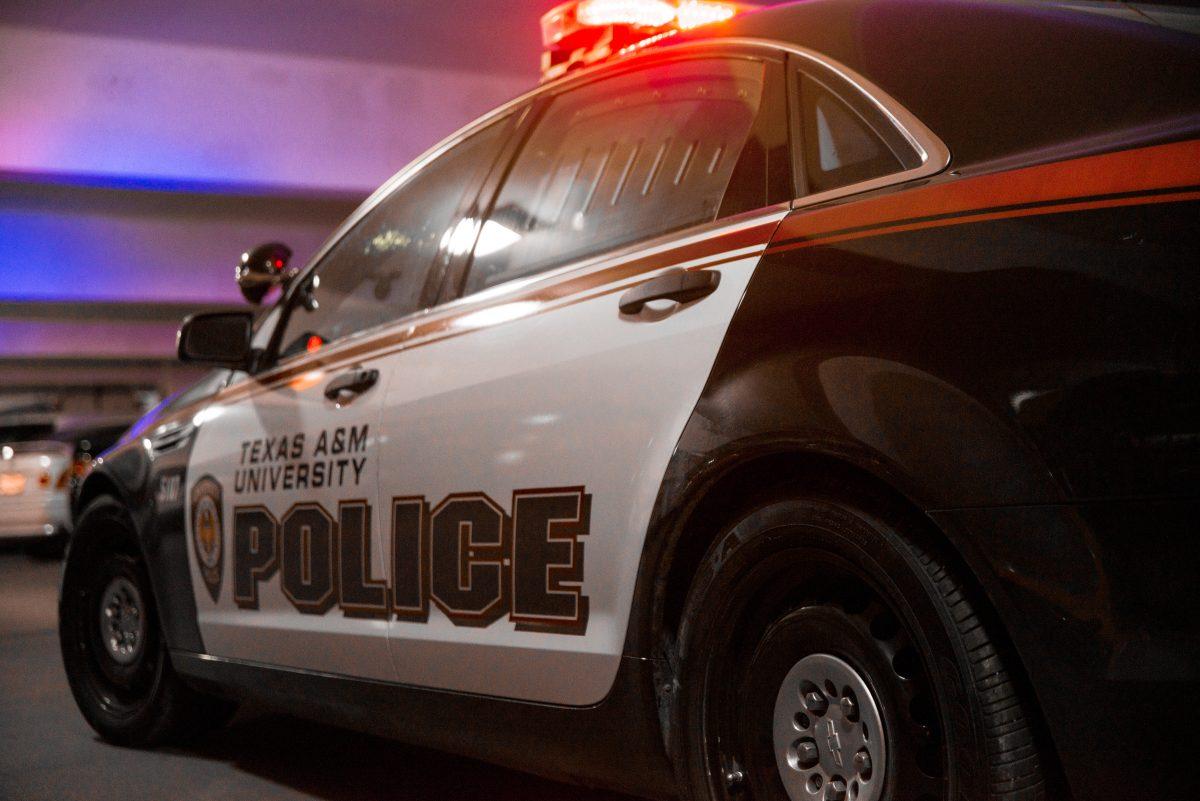From a host of reports, 6 a.m. shifts and College Station traffic, a day in the life of a University Police Department officer involves plenty of twists and turns.
Krystina Tran, UPD communications officer, said A&M is an interesting location to work in because of all the things that can go wrong.
“I think A&M campus is different than a lot of universities because of all the things we have here,” Tran said. “I mean, we have a nuclear power plants, we have a railroad that goes through campus, we have an airport, we have bio-level-3 labs, we have a presidential library. So there are huge significant things on campus that distinguish us from different universities possibly think of could happen on this campus.”
Paxton said a patrol officer begins the day with a 45-minute briefing on campus happenings and things to be on the lookout for. Next, the officer checks out equipment and loads up the vehicles, including heavy armor in case of a live shooter incident.
After that, Paxton said officers do a 20-minute inspection of UPD vehicles, including a test of the siren and lights.
For communications officers, Tran said the job is all about multitasking. Not only is it a communications officer’s job to answer 9-1-1 calls, but also to monitor cameras and alarms and answer non-emergency calls.
Tran said the largest task for communications officers is acquiring information for officers out on a call.
“We have a lot of resources,” Tran said. “We’ll stalk people on Facebook, we have a parking database that parking lets us use to find what kind of vehicle they drive, where they park and in the emergency situations we can go through a process of pinging their cell phone and getting an idea of the general area that might be in. That can only be used in life-or-death situations.”
No matter how detailed a description the dispatcher gives, Paxton said the officer will — without fail — respond with another question.
“It never fails — after the dispatcher will put the call out the officer will ask some random questions,” Paxton said. “It sounds crazy but it’s because the officer is probably looking at the person and they are wearing some strange color socks.”
Paxton said an officer’s task depends largely on the time of day. During the day, officers tend to see cases such as theft, accidents and welfare concerns.
“Evenings shift you’ll see a lot more accidents, you see a lot of hit-and-run accidents,” Paxton said. “Evening shift also starts seeing harassment, stalking-type calls, that’s when those start coming in. We also start seeing welfare concerns and suicidal subjects. Now night shift that’s the shift where it’s pretty much officer-initiated stuff. They really get out there and work traffic pretty hard, and they are looking for public intoxication.”
Paxton said a large part of the job is filling out paperwork. Every officer has to file an incident report after speaking with someone about a call. UPD files so many reports that a room is dedicated to storing the paper copies.
Paxton said an interesting fact about the department is that it has statewide jurisdiction.
“The way we get our authority is through the education code,” Paxton said. “And it states that any county where A&M owns, leases or rents land in we have jurisdiction of that county and A&M has land in every county in the state of Texas.”
Paxton said students should not hesitate to call the department if they are concerned about something.
“Don’t wait to call us,” Paxton said. “Everyone waits five, 10, 20 minutes. I’ve had some suspicious-person calls that come in an hour or two after you’ve observed the person and when you talked to the reporting party they say, ‘Well, I went and talked to my professor and they said…’ Call us. If it’s nothing, no big deal, but just by waiting five minutes the chance of me or one of my officers getting out there and finding the person you are talking about decrease exponentially.”




















